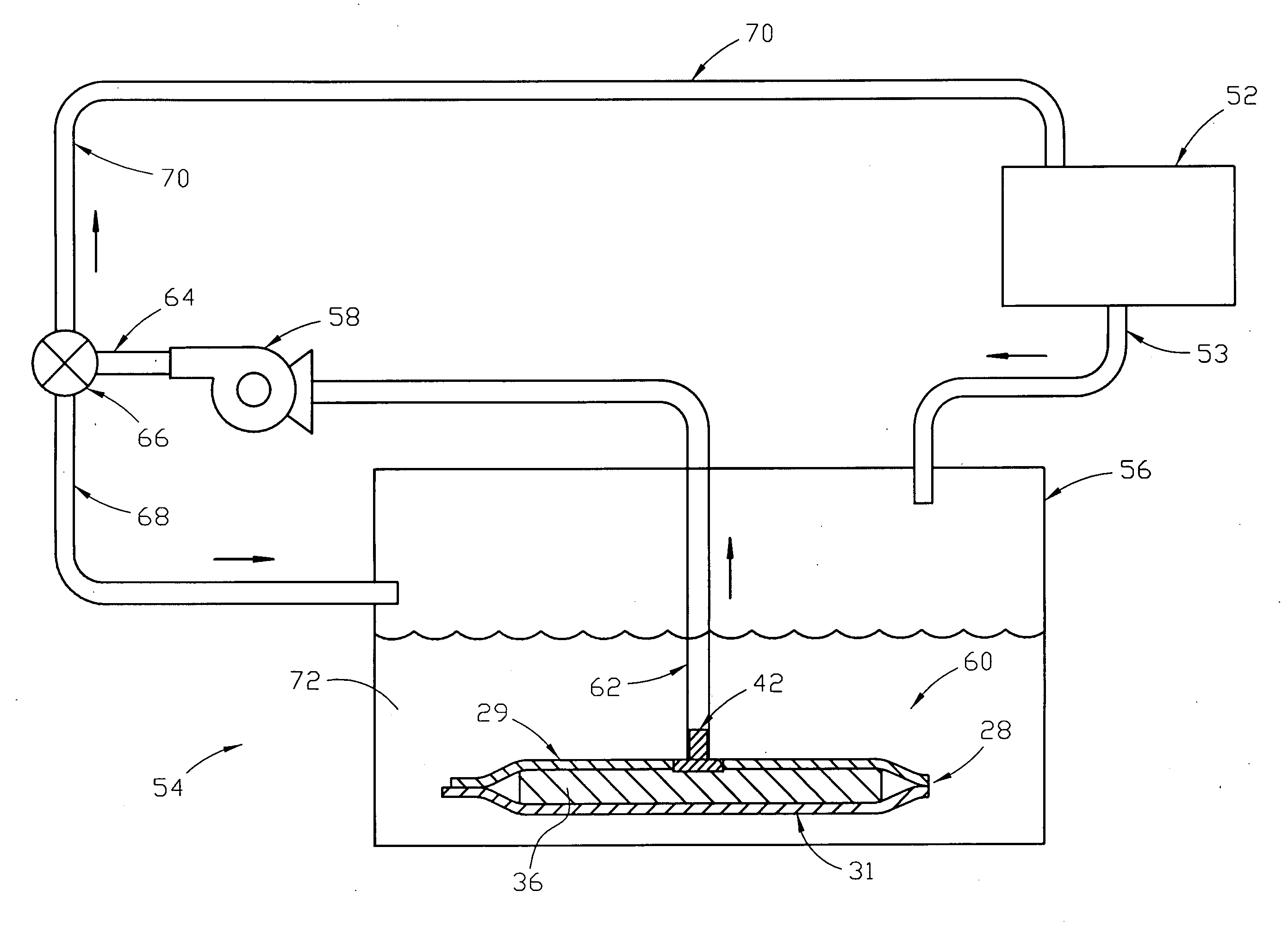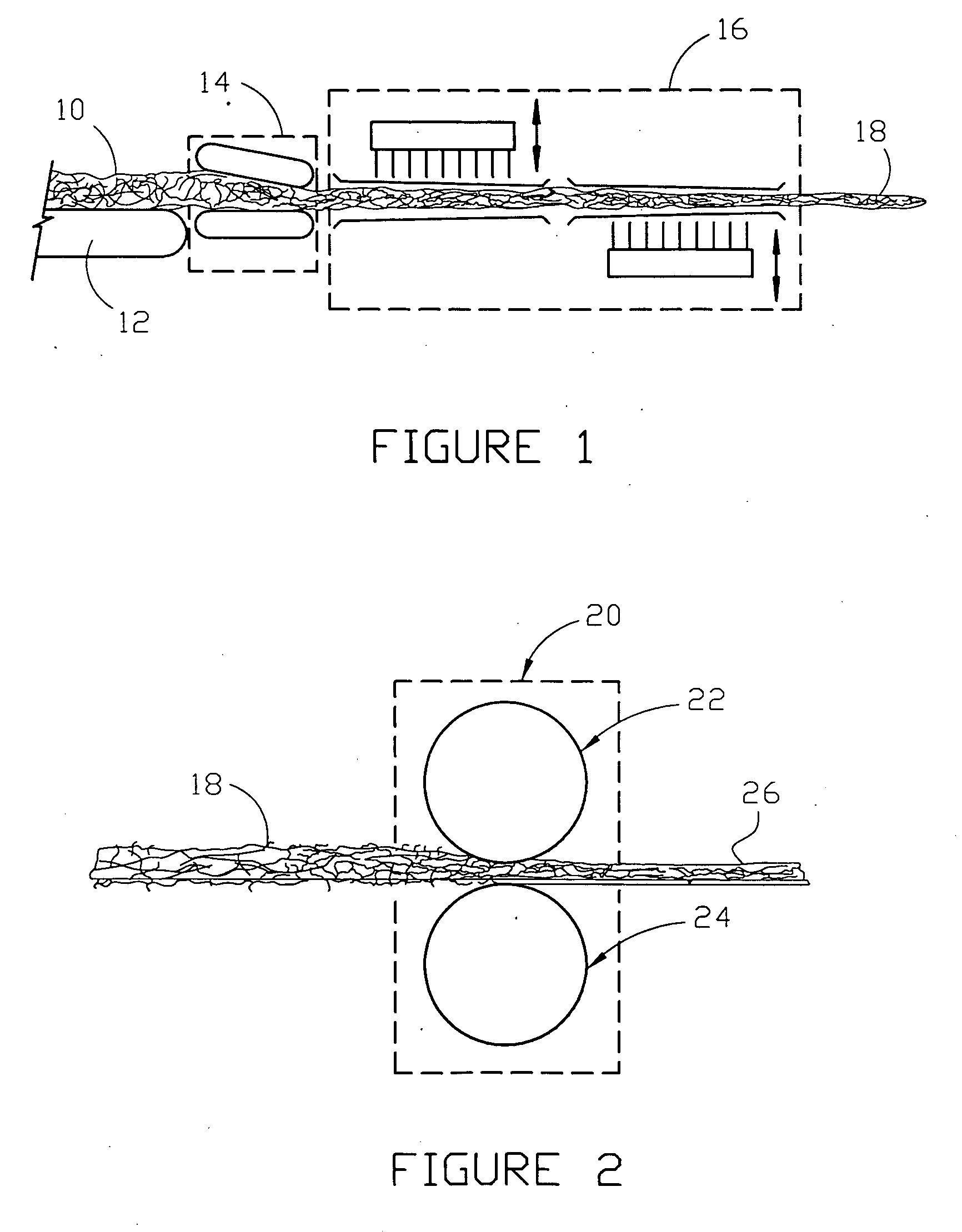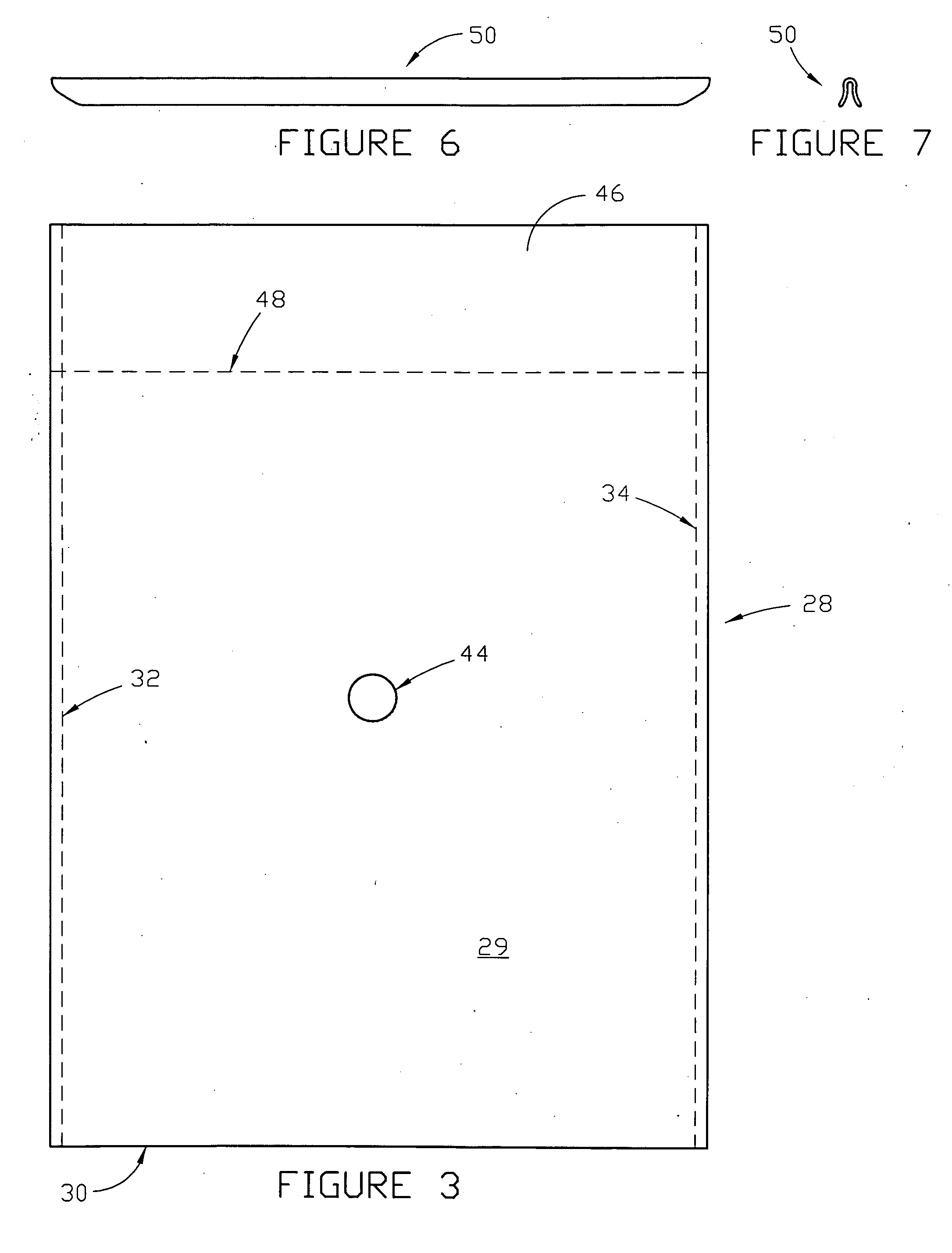Method for filtering cooking oil used in frying process
a filtering method and cooking oil technology, applied in the direction of gravity filter, separation process, filtration separation, etc., can solve the problems of reduced thermal efficiency, color change, alkalinity or acidity change, etc., to improve the quality of fried food items, improve the separation efficiency of particulates, and reduce the odor
- Summary
- Abstract
- Description
- Claims
- Application Information
AI Technical Summary
Benefits of technology
Problems solved by technology
Method used
Image
Examples
example 1
[0045]In a first test, polyester felt filter material was used to filter a quantity of discarded cooking oil having a free fatty acid content of 2.33% by volume. Three filter envelopes were constructed, each filter envelope comprising a unique polyester filter. The unique polyester filters comprised:
[0046]Filter Material 1 (FM-1): A polyester felt filter having a porosity of 509.7 liters per minute (18 cubic feet per minute), a unit weight of 542.5 grams per square meter (16 ounces per square yard) and a thickness of 0.17 centimeters (0.067 inches).
[0047]Filter Material 2 (FM-2): A polyester felt filter having a porosity of 141.6 liters per minute (5 cubic feet per minute), a unit weight of 440.8 grams per square meter (13 ounces per square yard) and a thickness of 0.09 centimeters (0.035 inches).
[0048]Filter Material 3 (FM-3): A polyester felt filter having a porosity of 254.9 liters per minute (9 cubic feet per minute), a unit weight of 440.8 grams per square meter (13 ounces per ...
example 2
[0051]A separate round of testing was conducted to measure the performance of a synthetic felt filter comprised of polyester felt material of the composition of FM-1 of Example 1 in batch filtration over an extended period of time. A first test was conducted at 177° C. (350° F.), which is a common frying temperature in the restaurant industry. A second test was conducted at 196° C. (385° F.). The flow rate of the cooking oil was measured to determine if the filter media remained effective after exposure to cooking oil at these temperatures for an extended period. Table 2 provides a summary of the results:
TABLE 2InitialInitialExpo-ResultShrinkageFlowThick-sureResultThick-Length / Test(L / nessTempTimeFlownessWidthNo.min)(cm)(° C.)(min)(L / min)(cm)(%)130.30.1717724030.30.21 2% / 3.5%230.30.1619624032.20.224.5% / 7%
[0052]At 177° C., the flow rate remained constant after exposure for four hours, and the polyester felt filter experienced shrinkage across the length of 2% and across the width of ...
PUM
| Property | Measurement | Unit |
|---|---|---|
| temperature | aaaaa | aaaaa |
| length | aaaaa | aaaaa |
| temperature | aaaaa | aaaaa |
Abstract
Description
Claims
Application Information
 Login to View More
Login to View More - R&D
- Intellectual Property
- Life Sciences
- Materials
- Tech Scout
- Unparalleled Data Quality
- Higher Quality Content
- 60% Fewer Hallucinations
Browse by: Latest US Patents, China's latest patents, Technical Efficacy Thesaurus, Application Domain, Technology Topic, Popular Technical Reports.
© 2025 PatSnap. All rights reserved.Legal|Privacy policy|Modern Slavery Act Transparency Statement|Sitemap|About US| Contact US: help@patsnap.com



